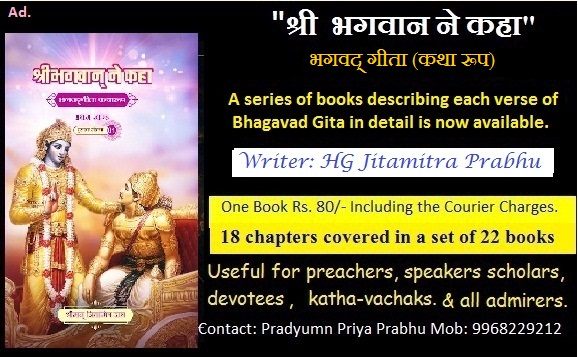Taj Mahal Was A Hindu Temple
Taj Mahal was a Shiva Temple called "Tejo Mahalaya". The people who think otherwise please answer the below questions or a valid counter to the below points
An article by P. N. Oak (from Pune, India) provides an overview of his research and lists his 109 proofs of how the Taj Mahal was a pre-existing Hindu temple palace, built not by Shah Jahan but originally at least 500 years earlier in 1155 AD by Raja Paramardi Dev as a Vedic temple. He has done much research into this topic, and we will seevsome of his findings. The evidence he presents here is a most interesting read, whether you agree with it all or not, or care for some of the anger in his sentiment. Mr. Oak has presented his own conclusions in his books, most notably Taj Mahal--The True Story
In 2022, a
member of Prime Minister Narendra Modi's Hindu-nationalist Bharatiya Janata Party
petitioned Allahabad High Court, in Uttar Pradesh state, to throw open 22
locked doors at the Taj Mahal to find out its “real history”
Historical
documents and farman (official decrees) from the 17th century
show that the land the Taj Mahal was built upon previously housed a riverfront
estate belonging to Jai Singh, a senior general and minor royal of the Mughal
empire.
The older Shiva Temple (Tejo Mahalaya) was usurped by Shah Jahan from then Maharaja of Jaipur,Jai Singh. In his own court chronicle Badshahnama, Shah Jahan admits that an exceptionally beautiful grand Mansion was taken from Jai Singh for Mumtaz's burial. The ex-Maharaja still retains in his secret collection two orders from Shah Jahan for surrendering the Taj Building.
Some Visual Proofs of Existence of Hindu Religious Structure
# The dome of the
Taj Mahal bearing a trident pinnacle made of a non-rusting eight-metal Hindu
alloy. The pinnacle served as a lightning deflector too. Visually identifiable
things like this pinnacle too have been misinterpreted with impunity. The
flower top of the dome, below the pinnacle, is an unmistakable Hindu sign. The
Hindu horizontal crescent and the coconut top together look like a trident. The
coconut, the bent mango leaves under it and the supporting Kalash (water pot)
are exclusive Hindu motifs.
# Inverted water-pots on top. Their number is always odd, 11 in this case, typical of the Vedic system. Notice also the cobra design in pairs below the gallery. Koranic inscriptions were added by Shahjahan later.
# Here is a typical tower (Burj) that is in familiar Rajput style, not Islamic in any way.
Many more pictures taken by earlier researchers are available.
# A Pavilion in Barhanpur is where Mumtaz was buried. When was her body / remains moved from Barhanpur to Agra after 27 years of her death or where is it mentioned that it was moved at all ?
# Please explain why are the underground apartments sealed ? Or what are appartments doing in a Tomb ?
# Doors to underground appartments and many such passages have been sealed.
# A music house in a Tomb ?
# Probably Shah Jahan forgot to cover the lotus at the apex of the entrance ? What is the excuse for Vedic designs on the ceiling ?
# A well in a Tomb ?
# The interior of the so-called Mosque at one end from the Taj with evidence it was converted later into a mausoleum. Steps were for the Mullahs to preach. But see how they break the pattern of decoration on the wall and also on the floor. This means that these steps are not original, but were put up when this building was converted into Mosque by Shahjahan. Also, when praying in this building.
# Using captured temples and mansions as a burial ground for dead royalty and courtiers was a common practice by Muslim Rulers. Ex: Humayun, Akbar, Etmud-ud-daula and Safdarjung are all buried in such mansions.
# The name Mahal has never been
used in the name of a building in any muslim country from Afghanistan to
Algeria.
# The explanation that it derives its
name from Mumtaz Mahal is illogical for 2 reasons :
a. Her name was Mumtaz-ul-Zamani and never Mumtaz Mahal.
b. One can not omit first three letters from a woman's name
"Mum" to derive the name of a building.
# Love story of Shah Jahan and
Mumtaz is a fairy Tale created by blundering historians and sloppy
archeologists.Not a single royal chronicle of Shah Jahan's time mentions the
love story.
Researchers In this Area
Prof. Marvin Miller of New York took few samples from the riverside doorway of the Taj, Carbon dating revealed those are atleast 300 years older than Shah Jahan.
European Traveller Johan Albert
Mandelslo, who visited Agra in 1638 (7 years after Mumtaz's death) describes
the life of the city in his memoirs. But he makes no reference to Taj Mahal
being built.
The writings of Peter Mundy,an
English visitor to Agra within a year of Mumtaz's death also suggest that the
Taj was a noteworthy monument well Shah Jahan's time.
Please read Prof. P N Oak's book
called Taj Mahal: The True Story for more detailed proof with pictures.
Although the first edition was banned by Indira Gandhi Government and the
publishers of it were warned of dire consequences.
An additional
collection that provides a closer look at the secrets of the Taj Mahal was
supplied by V. S. Godbole from England.
Stephen Knapp, author, philosopher, spiritual practitioner, traveler, photographer, and lecturer presents articles that explain the evidence for and against the idea that the Taj Mahal was a pre-existing structure before it was said to be built by Shah Jahan.






























